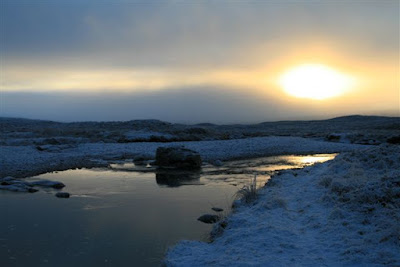
What is the finest hillfood in Scotland?
You will have your own favourites. I guess it's all about the situation - how battered you are, how thirsty or simply how hungover. You will have gathered this is not a post for you muesli-munching banana-peelers who demure at the sight of amber bottles and frying pans.

Two days in Glencoe absorbing some fine and traditional weather alike leads to different conclusions on this. A wet day of sleety rain with sodden feet frozen from bare-footing it through a frozen river or two (cursing the forgotten wellies) and I'd murder a flask of French Onion soup for some reason. The end of a sweaty walk-in and the blue Power-ades work a treat for the thirst. Babybel cheeses seem inordinately fun to unwrap in a private moment - little parcels of chewy cheese that remind me of 'No-Entry' signs as you unpeel the wax strip.
Or winegums found congealed together in the bottom of your chest pocket (with glove fluff) are the best for winter belays, I'm convinced on that one.
In the evening, stuck in the bothy and choking on a stuttering fire, the sound of a primus coming to life and a can of beer cracking is mighty close to perfection.
Or the first pint in the Kingy and a bowl of salted chips. Brown or red sauce according to which Scottish city you hanker for the most.
And the breakfast of champions? Two Lorne sausage 'squaries' interleaved with the cheapest, most orange Kraft cheese slices (melted to a fondue consistency on a high heat), squeezed between two flattened wholemeal rolls (the healthy concession). I will have to add the caveat that they taste better after beer than before.
Long live the Jacksonville Royale...
